Asus ZenFone 5Z (ZS620KL) Review
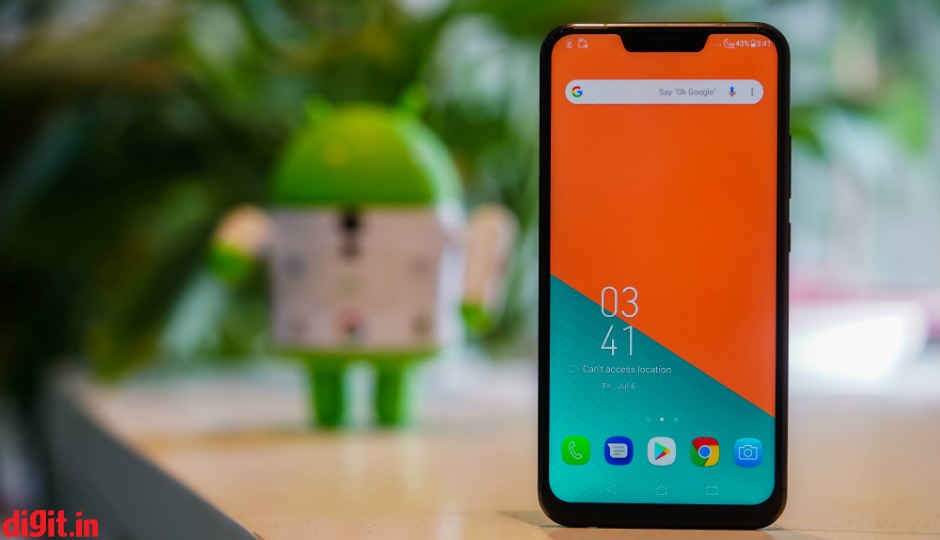
- 29999/-
Asus ZenFone 5Z (ZS620KL) Price in India
Asus ZenFone 5Z (ZS620KL) Rating 86100100
Our Verdict
The Asus Zenfone 5z does almost everything right. From the top-notch hardware to a stunningly bright display (albeit with a notch), but most importantly it's the price of the phone that is the best part about it. The Zenfone 5z with its Rs 29,999 starting price makes the OnePlus 6 look like an expensive flagship in comparison.
PROS
- Affordable price
- Bright and vivid display
- Capable camera
CONS
- Copycat design
- AI has limited scope
Asus ZenFone 5Z (ZS620KL): Detailed Review
It’s a curious year, 2018, for the Indian smartphone market. Usually, by the time we hit July, flagship smartphones are available in abundance and only then OEMs focus on the mid-range and high-end market. This year, however, the focus has been largely on these high-end and mid-range phones that trickle down the flagship features to a more affordable price points. The OnePlus 6, which is not considered a flagship phone, but a flagship killer was the first to introduce the Snapdragon 845 chipset in India this year. That honor usually is given to the likes of the LG with its G-series or Sony Xperia flagships. With the Honor 10 also, we saw the flagship Kirin chipset offered at a sub-40k price segment. All this indicates that the demand has shifted. Users are more concerned about the price to performance ratio than ever before which is why phones like the OnePlus 6 are selling so well. But OnePlus’ party this year may just be spoiled by a dark horse — The Asus Zenfone 5z. An Asus flagship that arrived after a long time of dabbling with selfie-centric mid-range phones. It isn’t disastrously priced as the Zenfone 3 Deluxe from a few years ago which carried a 60k price tag. Instead, the Zenfone 5z this time undercuts even the OnePlus 6 to offer more bang for the buck. Starting at Rs 29,999, the Zenfone 5z offers everything that the OnePlus 6 does and then some. If the focus of the OnePlus 6 is speed, the Zenfone 5z is all about bringing intelligence to speed. But is added smartness in an already smart smartphone enough to add any actual value over its fiercest competitor? We find out.
Design and build
The Asus Zenfone 5z, like most other smartphones launched this year, follows in the footsteps of Apple rather unabashedly. The notch, vertically aligned dual cameras at the top right corner of the rear panel, glass body, even the compact dimensions and to some extent, the display. Overall, when you cradle the phone in your palms, it’s hard to differentiate between a real iPhone X and this one-third-priced imitation. But there are nuances that are unique to the Zenfone 5z such as the concentric circle design. It’s signature Asus design and has been utilised in the company’s phones and laptops for quite some time now. The rear panel is polished to an extent that when light reflects off it, it shoots off rays of light radially from the rear-mounted fingerprint sensor. It looks pretty cool and renders an effect that screams luxury. Yet, if you have seen the Honor 10 or the more expensive Huawei P20 Pro, it’s likely not going to entice you. It’s still isn’t as gaudy as the Zenfone 3 though and the muted Meteor Silver colour variant I received for the review is an exercise in restraint. The glass back has all the flaws we have encountered in other phones built out of glass. Affinity of gathering smudges, slippery, and being less durable than metal unibodies. The choice of glass seems even more pointless after you realise there’s no wireless charging.
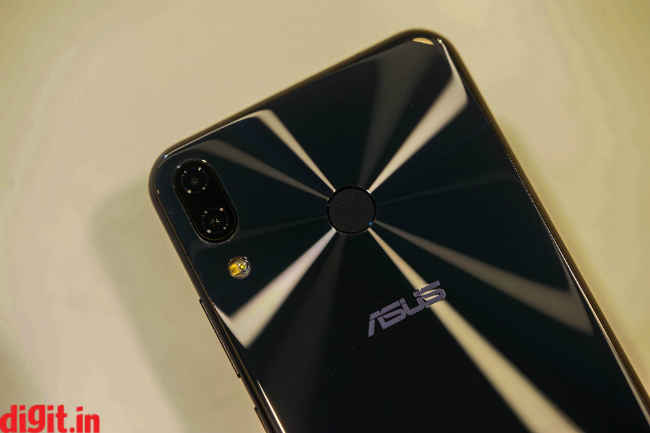
Up front is all glass. Mostly. Despite having a notch and stretching the panel to its edges, there are significant bezels at the bottom and a thin black border along the sides. The side bezels are so thin that content actually feels like it’s stretching edge to edge. But then, the notch sort of ruins the aesthetics. It is programmed to disappear if a video is playing, but along with disappearing, it also creates artificial bezels that brings us back to square one. That’s the inherent flaw of the notched display. It will look bezel-less (almost) when the entirety of the screen is not being used, but the moment you put the whole thing in use, it has to shrink down the usable area. But as much as I rant about the asymmetrical flaw in the notched design, it has its own advantages. The notch allows that little extra space to fit in the icons and other elements in the status bar in the 0.2-inch area and leave the rest of the 6-inch screen open for use. That way you get the entire real-estate of a traditional 6-inch panel that wasn’t possible earlier. Furthermore, the reason why motorised cameras are not replacing notches by the dozen just yet is because the proximity sensor and earpiece also need a place up front. Perhaps a combination of Xiaomi Mi Mix’s design and the Oppo Find X’s innovation is the key to having a truly bezel-less screen, someday.
The glass back might have some inherent flaws, when held in the hand, it feels like its a piece of luxury. Additionally, fitting a 6.2-inch display in a 6-inch form factor means it is easy to hold and use with one hand. Overall, I really liked the compact nature of the phone. It feels like a power user’s phone. In comparison, the OnePlus 6 also has a slim profile and is a charm to hold and feel but it’s bulky nature might put people off.
Display
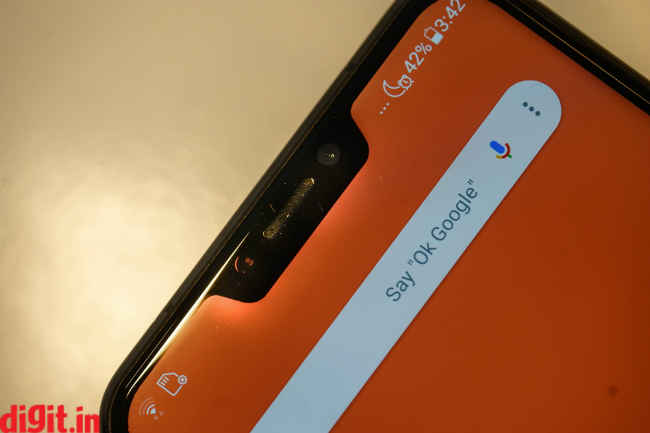
Like I mentioned before, the Asus Zenfone 5z is all screen from the front. To make it work, Asus had to provide a panel that’s worthy of all that real estate. And so it did. The 6.2-inch IPS LCD display on the Zenfone 5z is one of the best we have seen at its price. It’s sufficiently bright and vibrant and has a fused glass panel that allows for better viewing angles and visual fidelity. It’s also quite legible under harsh sunlight and watching HD content on it is a charm. Don’t believe me? Just watch the trailer of The Secret Life of Pets which has superb visuals and you’ll be left amazed. The colours are punchy and details are perfectly sharp. It’s also quite uniformly lit which is where most LCD panels take a hit because light bleeds out from the edges. The white balance of the panel is slightly on the cooler side, but it’s likely you won’t notice a difference in watching content.
Software and UI
A major part of the smartphone experience, especially in the case of the Zenfone 5z is driven by the UI. Asus has also cleaned up its UI a lot. It’s a lot more coherent and there’s very little bloatware, most of which can thankfully be uninstalled. The icons are also less cartoonish and there is an overall improved sense of aesthetics which had been missing in ZenUI for a while. There’s Face Unlock that works in a fast and secure manner. It unlocks in less than a second, but has troubles in doing so under pitch darkness. Also, it understands when the eyes are closed to render some sort of security. The face unlock works to secure individual apps as well. The fingerprint is faster though and since it’s so easily accessible, I found myself unlocking quickly with the fingerprint instead of holding up the phone to facially unlock. You can run dual instances of apps like Facebook and WhatsApp. Asus also promises 18 months of regular security patches and version upgrades, which means the Zenfone 5z isn’t going to get outdated real soon.
Performance and audio
The Qualcomm Snapdragon 845 is the key to the Zenfone 5z’s smooth performance. The flagship processor is shaping up to be one of the best we have seen from Qualcomm’s stables and it has enough firepower to power through just about anything you throw at it. There’s also up to 8GB of RAM and 256GB of storage. We received the 6GB RAM + 64GB storage variant for the review and it works perfectly smooth with no hiccups. I did come across a few apps force closing randomly which a software update can easily fix. Games like PubG works like a charm with no drop in the frame-rate. In fact, the Game Genie mode that frees up resources for gaming works pretty well. The mode also allows you to stream your gameplay via YouTube, Twitch or Facebook. A so-called AI feature called Optiflex is used that whitelists the apps you use the most and keeps them loaded in the memory all the time, so as to launch them faster. The UI animations are also quick and less time-consuming which renders a feeling of speed like the OnePlus 6.
In synthetic benchmarks like AnTuTu 7.0, the Asus Zenfone 5z surpasses the OnePlus 6 by scoring 268993 against 244517 while on Geekbench Single Core and Multi Core tests, the Zenfone 5z scores 2434 and 7388 respectively. The OnePlus 6 is better only in the latter test. Graphically also the Zenfone 5z comes out superior in the 3D Mark Slingshot test with 6317 against OnePlus 6’s 5702. These are impressive numbers that also reflect in the real world usage. Interestingly, the OnePlus 6 we reviewed had 8GB of RAM.
To test out how the phone performs in real-life situations, I kept around a dozen tabs open in Chrome, cycled between heavy apps like Lightroom Mobile, Microsoft Translate, GTA San Andreas, Netflix, Amazon Prime Video and a few more. There was no significant impact on performance despite these many apps open in the background. Asus will credit its AI, but my hunch is that the phone has superior resource management systems in the background that kills the apps if they aren’t used in a while. Quite impressively, the phone did not heat up while playing PubG by much. It hit 40 degrees after a few minutes which is pretty standard.
A special mention needs to be given to the audio capabilities of the Asus Zenfone 5z. It comes with dual speakers, each fitted with an NXP amplifier that drives audio at high volumes. There is no stereo separation in the speakers which is bummer, but it does compensate that with sufficient loudness. An outdoor mode cranks up the volume even further although at a loss of fidelity. The phone is also Hi-Res audio certified, meaning you can use this phone to get the most out of your FLAC files. Furthermore, you can connect an external DAC from the USB-Type C port to hit audiophile nirvana. The phone also comes bundled with hi-res earphones that are pretty good but nowhere close to the AKG IEMs you get with the Samsung Galaxy S9. It’s closest competitor, the OnePlus 6 neither has dual speakers nor does it come bundled with earphones, so if good audio capability is what you’re looking for, the Zenfone 5z is a no-brainer.
Based on our rigorous performance tests, the Asus Zenfone 5z comes out as a beast and comes dangerously close to negating the uniqueness of the OnePlus 6 which is its sheer speed and incredibly fluid UI. In this case, you get the speed plus a bunch of useful features.. It’s certainly a viable alternative to the OnePlus 6 and you won’t be disappointed with its performance.
Camera
So far, the Zenfone 5z has scored well in its design, added ‘AI’ features, display and even the performance, but the camera is the key part of deciding a smartphone’s fate in 2018. And in that regard, I have mixed feelings. The Asus Zenfone 5z has top notch camera hardware and added AI features that can either make or break a good photo. Sometimes, the camera really surprised me with its vibrance and colour reproduction, but on other times (although rare), the camera felt like it failed to deliver.
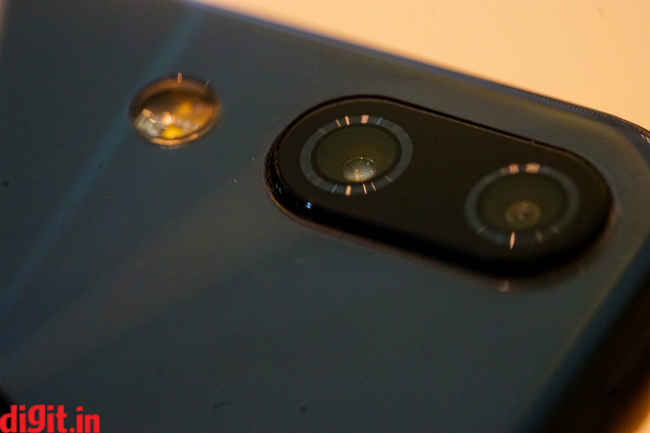
The Zenfone 5z has a standard 24mm 12-megapixel primary Sony IMX 363 sensor measuring 1/2.5” with a rather large 1.4um pixel pitch. The lens has an f/1.8 aperture. It’s the same sensor used on the Mi Mix 2S that received a record score from DxOmark. The secondary sensor is an 8-megapixel ultra-wide-angle lens with f/2.0 aperture, a large 1/4” sensor and 1.12um pixel size. Finally, there’s a colour correction sensor placed inside the flash unit and 4-stop OIS (on both lenses) and gyroscope-based EIS.
Apart from the stellar hardware, the software on top is doing much of the heavy lifting. One of the major feature of the phone is the inclusion of AI based features. It can detect 16 different scenes and subjects, including the difference between a dog and a cat. What does it do after detecting the scene? It also applies the relevant adjustments during post-processing that make the images come out bright and vibrant, usually even more so than it originally was. In comparison, images from the OnePlus 6 that are more neutral, controlled and look bleak, not necessarily weak. However, the machine-learning software inside the Zenfone 5z doesn’t always hit the bulls eye. It works best with the 16 specifically mentioned sets of scenes. Outside of that, it tends to experiment. I will highlight those nuances with the following shots to describe the unique camera on the Asus Zenfone 5z. To put things in perspective, I have used the OnePlus 6 to take the same shots.

Shot from the Asus Zenfone 5z

Shot from OnePlus 6
Still-life: It’s clearly understood which is more attractive. But truth be told, the cherries weren’t that shiny red. The OnePlus 6’s colours were far more accurate than the 5z’s. Yet, for the social-media quick fix, the Zenfone 5z is better. I would have edited the hell out of the OnePlus 6 image before posting online. For the Zenfone 5z, not so much. However, I actually enjoy the process of tweaking the exposure and the contrast, pulling the highlights down and setting the saturation right. The OnePlus 6 gives me the creative freedom to play around with the resulting image. The Zenfone 5z is ready-made, instant masterpiece.

Shot from Asus Zenfone 5z

Shot from OnePlus 6
Indoorscape: In this indoor shot taken at the launch of the Zenfone 5z, the OnePlus 6 makes a better reproduction. It’s definitely brighter than the 5z. But the extra light has washed out the sky outside. The people in the frame is better detailed though, which is where the focus is. The 5z is more controlled with the exposure. And that allows the neon red and the amber accents to flourish even more, which contrasts the sky outside. Between the two, I would use the one from the Zenfone 5z.

Shot from Asus Zenfone 5z

Shot from OnePlus 6
Daytime landscape: Smartphones are perfectly capable of taking decent landscape shots in the day and the Zenfone 5z is equally proficient in this regard. Only, in comparison to the OnePlus 6, the image from the Zenfone 5z seems to have noticeably lesser contrast. Due to this, the colours are far more vibrant in the OnePlus 6. Overall, I liked the output from the OnePlus 6 more than the Zenfone 5z in this case. The image from the OnePlus 6 seems to be punchier.

Shot from Asus Zenfone 5z

Shot from OnePlus 6
Low-light: Smartphone cameras are judged by their low-light capabilities these days as most phones can take decent shots in the daytime. Asus uses a larger sensor and pixel size to allow in more light. There’s also dual-pixel PDAF to keep things in focus. But the results aren’t all that impressive. The camera struggles to light up the entire frame. The books are in focus somewhat but there's significant detail loss. Heck, that’s the same in the comparison shot from the OnePlus 6 as well. However, while the shot from the OnePlus 6 has a lot of noise, the Zenfone 5z managed to get rid of it through multi-frame processing. The dynamic range is also better than the OnePlus 6.


Wideangle: The Zenfone 5z touts a 12mm wide-angle lens as the secondary camera with a 120-degree field of view. It’s something we have in the LG G6 last year and the LGV30. And for the most part, it carries over the same flaws that made LG’s offering not so attractive. There’s ample barrel distortion along the edges. Straight lines get bent easily giving a fisheye-like feel. Moreover, the wide-angle camera is weaker among the two. It has a larger sensor but smaller pixel size, which is why there is a lot of noise in photos especially when the lighting isn’t ideal. The dynamic range isn’t all too good either. Parts of the frame gets easily overexposed.

Depth-mode: The secondary sensor is also used to provide a shallow depth of field to help take better portrait shots. Portraits come out smooth with extra saturation and colour enhancement. There are added beautify options as well. The blurring was also more or less consistent but loose strands of hair will regularly get blurred. You can also increase the radius of focus to keep more of the frame in focus.
Battery
The Zenfone 5z touts a 3,300mAh battery inside. It lasts fairly long, almost as much as the OnePlus 6. In our PCMark Work 2.0 test, it lasted for 8 hours 14 minutes which should convert to a day of use. In real world usage, the phone lasted an average work day from 10AM to 8pm with around 15 percent charge left. I used it to browse social media, play videos and music from the loudspeaker, browsed the internet and took photos. Power users might need to charge it at the end of the day. The phone supports Quick Charge 3.0 and comes bundled with an 18W charger that can top up the phone in around an hour.
AI or no AI?
Yes, the Zenfone 5z and the term AI has been taken under the same breath a zillion times and to some extent, it does use a lot of features that could be considered intelligent, but they aren’t A.I. The Zenfone 5z boasts of features like AI charging, AI ringtone, AI camera, AI app recommendations and what not. Only, it’s just blatantly wrong to call it AI.
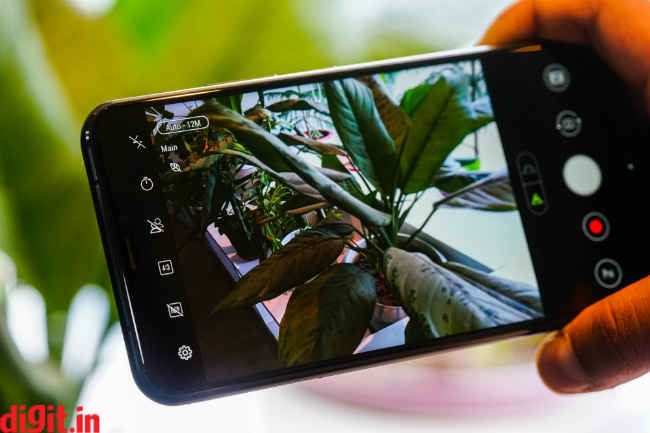
What Asus is actually using is good ol’ machine learning and that isn’t a new technology at all. The AI charging is using the accelerometer to know when the phone is lying in a state of rest for a stipulated period of time and then feeding that data to the algorithm to chart out the best time to slow down the charging. It’s something most phones did for long by capping the fast charging to 80 percent and trickle charging after that to elongate the battery life. Secondly, the AI ringtone feature is simply using the microphones to detect background noise, and if it can’t find much noise, it dampens the ringtone sound figuring you want to maintain the quietude. On the other hand, if the microphone picks up a lot of noise, it rings the phone at full volume. But humour me, what if I’m at a restaurant and it’d actually be rude to let the phone ring at full volume? Or if I’m in my bedroom and the phone is away charging and I actually want to hear the phone ringing? Thirdly, the AI camera that Asus says recognises what you’re shooting and applies the relevant filters and adjustments to make it vibrant enough is just a machine learning model trained with a lot of images and taught to enhance them. It will also ask you to choose between an edited photo and the original one, and remember your inputs to apply them the next time you shoot something similar. Not AI by a long mile. Finally, the AI recommendations that shows you the most relevant apps at the bottom of the app drawer is simply based on your usage habits. The more you open an app at a particular time of the day, the more it will be prioritised.
I have a thing against clubbing unique technologies that take a lot of time and effort to develop under one umbrella term. Asus agrees it is doing so and it’s explanation is that since all these features help enhance the user experience, it can be called AI. Furthermore, according to Asus, the users aren’t really that intelligent to understand complex tech, so an umbrella term like AI helps get the message through. It certainly helps in branding and it is easy to latch on to a buzzword to sell your product. Lazy marketing is what I’d call it. Nevertheless, despite a disconnect in the messaging and the actual offering, the so-called AI features work well enough to improve the experience. It essentially uses the AI engine in the Snapdragon 845 to perform the ‘AI’ tasks efficiently. The AI engine in the Snapdragon 845 distribute the workload to the CPU, GPU and the DSP depending on which can compute the load better. Credit should be given to Asus to utilise the engine to deliver these features which is something most OEMs have ignored, especially the OnePlus 6 that simply uses the Snapdragon 845 to offer speed.
Bottomline
Overall, the Zenfone 5z is quite a well-rounded device. It doesn’t have any glaring fault on the surface and using the phone was a breeze. Is it better than the OnePlus 6? I don’t think so, but it is a very close alternative. You won’t regret buying this. They are more or less at par which is a great thing for Asus, given that have struggled to make a compelling flagship phone so far. The Zenfone 5z is affordably priced starting Rs 29,999 which will be the key to its success. It undercuts every other flagship and high-end phone offered this year without compromising on the hardware. It would have been great to have wireless charging and water resistance, but you can only get so much for your money.
Other Popular Deals
 Flipkart teaser suggests Asus will launch Zenfone 5z in India on June 26
Flipkart teaser suggests Asus will launch Zenfone 5z in India on June 26Taiwanese tech giant Asus is readying to launch its flagship smartphone Zenfone 5Z in India later today. The Zenfone 5z...
26 - Jun - 2018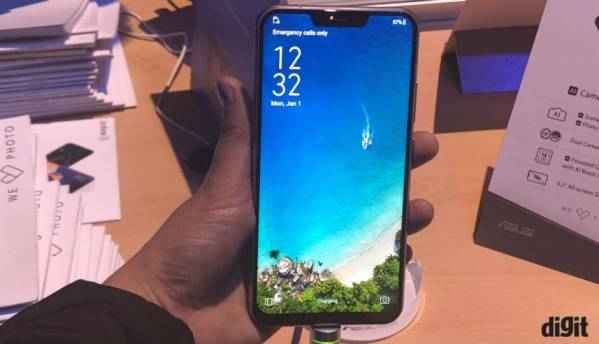 Asus Zenfone 5Z to be announced today in India at 12:30 PM, expected to start at Rs 29,999
Asus Zenfone 5Z to be announced today in India at 12:30 PM, expected to start at Rs 29,999Asus will unveil its flagship Zenfone 5Z smartphone at a launch event today at 12:30 PM. As the handset was unveiled at the Mobile World...
04 - Jul - 2018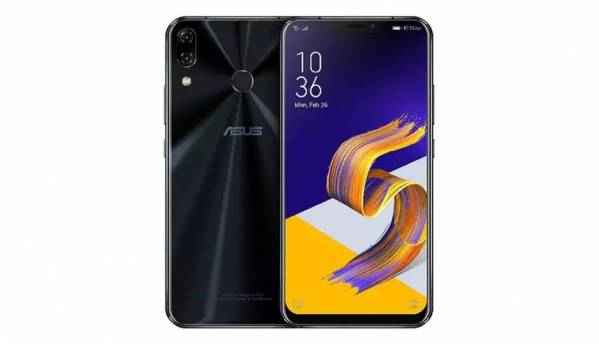 Asus Zenfone 5Z listed starting at Rs 29,999 on Flipkart ahead of July 4 India launch
Asus Zenfone 5Z listed starting at Rs 29,999 on Flipkart ahead of July 4 India launchAsus is all set to launch its flagship Zenfone 5Z in India as a Flipkart exclusive on July 4, tomorrow. However, the online retailer has slipped up...
03 - Jul - 2018

It's a curious year, 2018, for the Indian smartphone market. Usually, by the time we hit July, flagship smartphones are available in abundance and only then OEMs focus on the mid-range and high-...
---------------------------------------------------------------------------
Visit this link to stop these emails: http://zpr.io/PnAEp









